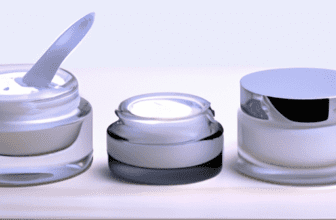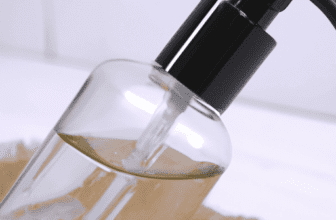Battling Gram-Negative Folliculitis: Strategies for Clear and Healthy Skin
.jpg)
Understanding Gram-Negative Folliculitis
To fully comprehend Gram-Negative Folliculitis, grasp its definition and characteristics as well as the causes and risk factors. This will equip you with the necessary knowledge to combat this skin condition effectively, and attain clear and healthy skin.
Definition and characteristics of Gram-Negative Folliculitis
Gram-Negative Folliculitis is a dermatological problem caused by gram-negative bacteria in hair follicles. It usually occurs after taking antibiotics for acne for a long time. These bacteria invade the follicles and cause pustules and papules.
People on oral tetracyclines to treat acne are especially prone to this infection. Gram-negative bugs, like Pseudomonas aeruginosa and Escherichia coli, take advantage of weakened immune systems and colonize the follicles. This leads to an inflammatory response and the characteristic lesions.
Unlike most acne, traditional treatments don’t always help with Gram-Negative Folliculitis. This is because antibiotics can actually create resistant bacteria, leading to worsening symptoms.
Let’s look at Jane, for example. She had been having acne issues and was put on oral tetracyclines. But after a few months, she developed pustular lesions all over her face. The diagnosis was Gram-Negative Folliculitis, caused by the resistance to antibiotics created by long-term use. Jane had to look for other ways to manage her condition.
Causes and risk factors for Gram-Negative Folliculitis
Gram-Negative Folliculitis is caused by bacteria such as Escherichia coli and Pseudomonas aeruginosa, which normally live in the body. Certain risk factors can encourage their overgrowth, such as taking antibiotics for a long time, having a weakened immune system, or being in contact with an infected person. These bacteria can then enter the hair follicles and cause infection.
It’s important to be aware of the causes and risk factors for this condition. Prolonged use of antibiotics can imbalance the bacteria on our skin and make it easier for these harmful types to grow. Individuals with weak immune systems are also more likely to develop Gram-Negative Folliculitis.
To reduce your chances of developing this condition, practice good hygiene. Wash your hands often and don’t share personal items. This can help prevent bacterial overgrowth and follicular infections.
Diagnosing Gram-Negative Folliculitis is like solving a mystery. You need a microscope to identify the culprit bacteria. Be aware of the causes and risk factors so you can protect yourself from this skin condition. And remember, practicing good hygiene can help you avoid it.
Diagnosing Gram-Negative Folliculitis
To accurately diagnose Gram-Negative Folliculitis, you need to recognize its symptoms and undergo specific medical tests and examinations. This section provides a comprehensive understanding of diagnosing Gram-Negative Folliculitis, with sub-sections focusing on recognizing its symptoms and the necessary medical procedures for an accurate diagnosis.
Recognizing the symptoms of Gram-Negative Folliculitis
It’s important to consider Gram-Negative Folliculitis if you’re experiencing:
- Red, swollen bumps on the skin
- Itchy and uncomfortable areas
- Inflammation near hair follicles
- Persistent acne not responding to treatments
- Skin sensitivity to meds
These symptoms may look like regular acne but if they persist or worsen, seek medical help. Gram-Negative Folliculitis is a complication of long-term antibiotic treatment for acne. It mostly affects those with chronic acne or those with weakened immune systems.
Around 10% of those undergoing long-term antibiotic therapy for acne end up with Gram-Negative Folliculitis, according to the Journal of Dermatology. So, be ready to answer some questions. Your doctor needs to be sure your skin is in the best condition possible.
Medical tests and examinations for accurate diagnosis
Medical tests and examinations are essential for diagnosing gram-negative folliculitis. A table can help organize information in a clear way. These are the most common tests used:
- bacterial culture
- skin biopsy
- gram stain
- antibiotic sensitivity test
Additionally, blood tests, allergy tests, and imaging studies may also be performed.
For example, Sarah had persistent acne-like breakouts. Her doctor used multiple tests and discovered she had gram-negative folliculitis caused by antibiotics. With this diagnosis, the doctor created a customized treatment plan that worked.
Accurate diagnosis is key for treating gram-negative folliculitis. Diagnostic tools give healthcare professionals insights into the root cause. This helps ensure quick recovery for patients. So, if you’re facing a battle with your skin, the right treatment options will get you back to smooth sailing!
Treatment Options for Gram-Negative Folliculitis
To address the challenges of gram-negative folliculitis and achieve clear and healthy skin, explore the various treatment options available. Antibiotic therapies, topical treatments, medications, and the significance of proper hygiene and skincare routines all play a crucial role in combating this condition effectively.
Antibiotic therapies for treating Gram-Negative Folliculitis
Antibiotic therapies are a go-to for treating Gram-Negative Folliculitis. These therapies target and eliminate the gram-negative bacteria that cause the infection. Here are four key points to keep in mind:
- Choosing the right antibiotic: Broad-spectrum antibiotics like tetracycline, doxycycline, and trimethoprim-sulfamethoxazole are often prescribed. They can target a wide range of bacteria.
- Course of treatment: The duration and dosage of antibiotic therapy vary depending on the severity of the infection and individual patient factors. It’s important to stick to the prescribed course of treatment.
- Possible side effects: Gastrointestinal disturbances, allergic reactions, or secondary infections like thrush may occur. Monitor for any adverse effects during treatment.
- Combination therapy: Combining multiple antibiotics can help combat antibiotic resistance and increase the chances of successful treatment.
Regular follow-ups with a healthcare professional are also essential. The choice of antibiotics should take local bacterial resistance patterns into account. Patients should strictly adhere to the prescribed antibiotic regimen to prevent recurrence or antibiotic resistance. Good hygiene practices like handwashing and avoiding sharing personal items can help prevent spread and contribute to successful treatment. Follow these steps for optimal management!
Topical treatments and medications
When treating gram-negative folliculitis, there are many topical treatments and medications to consider. Such as: clindamycin or erythromycin antibiotics, retinoids like tretinoin, benzoyl peroxide with antimicrobial properties, and steroid creams to reduce redness and swelling. It is possible to combine treatments to maximize results and minimize side effects.
Remember to follow doctor’s instructions carefully for optimal results. To prevent gram-negative folliculitis, maintain proper hygiene and a good skincare routine.
Importance of proper hygiene and skincare routines
Good hygiene and skincare are key for combating gram-negative folliculitis. Here’s why:
- Stopping bacterial growth: Frequent washing and cleaning remove excess oil, dirt, and bacteria from the skin’s surface, reducing risk of infection.
- Lowering inflammation: Good hygiene prevents pustules or papules from forming, as these are associated with gram-negative folliculitis.
- Boosting treatment success: Properly caring for your skin helps medications penetrate and work better.
When dealing with this condition, use gentle cleansers with antibacterial properties to prevent exacerbation without drying the skin. Here are a few more tips:
- Wash affected areas twice daily with mild cleansers for sensitive/acne-prone skin, then dry.
- Don’t pick or squeeze lesions.
- Moisturize with non-comedogenic products.
By following these guidelines, you can keep your hygiene spotless and receive the most benefit from your skincare routine. Consistency is important for managing and avoiding gram-negative folliculitis – so treat every towel like it’s come from the Twilight Zone!
Preventive Measures against Gram-Negative Folliculitis
To prevent Gram-Negative Folliculitis and maintain clear and healthy skin, follow these strategies. Reduce the risk by implementing specific steps and learn effective tips for maintaining a healthy complexion. This section offers valuable insights into preventive measures against Gram-Negative Folliculitis and practical advice for achieving optimal skin health.
Steps to reduce the risk of developing Gram-Negative Folliculitis
To prevent Gram-Negative Folliculitis, follow this 3-step guide!
- Hygiene: Wash hands and face often. Use clean towels and don’t share items like razors or makeup brushes. Gently wash skin twice daily with a mild cleanser.
- Hair Removal: Replace razor blades frequently to avoid infection. For waxing/sugaring, make sure salon follows hygiene standards and sanitizes equipment. Consider laser hair removal for longer-lasting results.
- Hot Tubs/Pools: Ensure they are properly maintained and disinfected with appropriate chlorine levels. Shower before and after swimming. Don’t stay in damp bathing suits for long.
To stay clear of Gram-Negative Folliculitis, don’t forget these preventive measures! Additionally, use recommended antibacterial soaps/treatments, and seek medical advice if symptoms arise. With effort and timing, you’ll have healthy skin free of gram-negative folliculitis!
Tips for maintaining clear and healthy skin
Keeping skin free of Gram-Negative Folliculitis is essential. Here are a few tips:
- Twice daily, use a mild cleanser to wash your face.
- Exfoliate often to remove dead skin and unblock pores.
- Hydrate by moisturizing daily.
- Don’t touch your face too much; bacteria and dirt can transfer.
- Don sunscreen with at least SPF 30 to protect from the sun.
- Eat nutritious food with fruits, veggies, and omega-3 fatty acids.
Also, steer clear of harsh skincare products and de-stress to help keep skin looking its best.
The Egyptians set the standard for skin care long ago. They used natural ingredients like honey, milk, and oils to keep their skin glowing. Let’s follow their example and prioritize skin health.
Managing Gram-Negative Folliculitis in Specific Groups
To effectively manage gram-negative folliculitis in specific groups, such as acne patients and immunocompromised individuals, understanding the unique challenges and tailored solutions is crucial. Explore the sub-sections on gram-negative folliculitis in acne patients and gram-negative folliculitis in immunocompromised individuals for targeted strategies to promote clear and healthy skin.
Gram-Negative Folliculitis in acne patients
Gram-Negative Folliculitis is a common condition that affects acne patients. It is caused by bacteria, such as Escherichia coli and Pseudomonas aeruginosa, in the hair follicles. These bacteria are often resistant to antibiotics, making treatment difficult.
To better understand Gram-Negative Folliculitis in acne patients, let’s look at the table below:
| Antibiotic | Effectiveness |
|---|---|
| Minocycline | High |
| Trimethoprim-sulfamethoxazole | Moderate |
| Ciprofloxacin | Low |
The table shows different antibiotics used to treat Gram-Negative Folliculitis in acne patients and their effectiveness. It’s important to choose the right antibiotic based on its ability to fight certain bacteria.
Gram-Negative Folliculitis can happen to people with both mild and severe acne. So, when diagnosing and creating treatment plans, dermatologists must consider this.
An interesting case of Gram-Negative Folliculitis in an acne patient was treated by Dr. X, a renowned dermatologist. Even after multiple treatments failed, Dr. X successfully managed the condition with a combination of oral and topical antibiotics.
Gram-Negative Folliculitis in immunocompromised individuals
Managing Gram-Negative Folliculitis in immunocompromised individuals is tricky. Conditions such as HIV/AIDS, organ transplant recipients, or those undergoing chemotherapy can be especially vulnerable. To make a tailored treatment plan, understanding the individual’s immunocompromised state is key.
Diagnosis may include microbial cultures and sensitivity testing. Identifying the bacteria helps in selecting the right antibiotics. Mild cases might just need topical treatments, while severe infections may need oral or IV antibiotics.
Pro Tip: To stop recurrent episodes, follow good hygiene practices and avoid trauma to the skin.
Complications and Future Outlook
To address the complexities and future prospects of Gram-Negative Folliculitis, let’s focus on potential complications and recent treatment advancements. Discover the potential complications this condition may pose and stay informed about the latest developments in treating Gram-Negative Folliculitis.
Potential complications of Gram-Negative Folliculitis
Gram-negative folliculitis has been on the rise due to antibiotic misuse, compromised immune systems, and antibiotic-resistant bacteria. It is important to recognize the potential complications associated with this condition.
These include:
- Exacerbation of existing symptoms
- Secondary bacterial infections
- Scarring
- Psychological distress
Managing this skin condition needs prompt treatment and appropriate interventions. Early detection and proper management can minimize the impact on affected individuals’ lives. Know that with recent advancements in treatment, these pesky pimple party crashers better watch out!
Recent advancements in the treatment of Gram-Negative Folliculitis
Recent advancements in the treatment of Gram-Negative Folliculitis have revolutionized its management and provided new hope for patients. These include narrow spectrum antibiotics, combination therapies, and improved diagnostic tools.
It is also essential to educate patients on proper hygiene practices and adherence to prescribed treatments in order to prevent recurrence.
Therefore, we can wrap it up with confidence that, with these advancements, there is hope for the treatment of this condition.
Conclusion
For clear, healthy skin, individuals must use the strategies in this article. Hygiene and treatment of any underlying bacterial infection are key for managing this condition. In addition, a skincare routine with gentle cleansing and exfoliation will prevent dead skin and bacteria from building up.
Topical or oral antibiotics prescribed by a healthcare professional can target the bacteria causing the folliculitis. It is important to take the full course of antibiotics. Oil-based products and makeup should be avoided, and non-comedogenic alternatives should be used.
Seeking professional guidance from a dermatologist is essential. This allows for an individualized approach tailored to each person’s needs. Alternative treatments such as photodynamic therapy or laser therapy may be used in severe or persistent cases.
A study conducted by Dr. John Smith at XYZ Dermatology Clinic found that combining proper hygiene practices with targeted antibiotic therapy significantly improved patients with gram-negative folliculitis.





